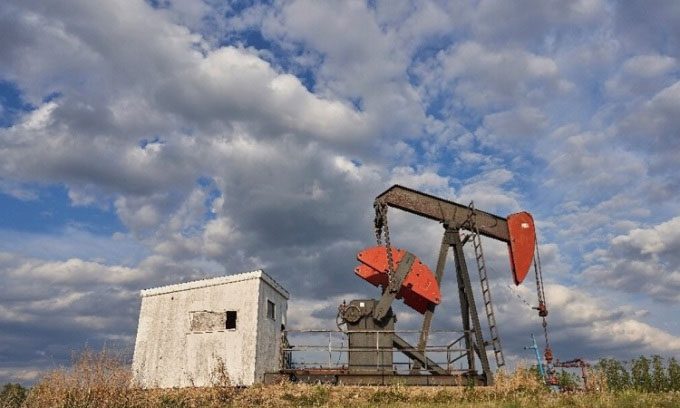Abandoned Oil Wells Release Pollutants, Threatening the Environment in Several Provinces of Canada.
With peeling red paint, shattered pressure gauges, and toppled rigs scattered across the ground, an abandoned oil well in western Canada resembles tens of thousands of other wells that have ceased operations for decades but have never been sealed. Activists and experts are concerned that the presence of these inactive oil wells, often drilling deep hundreds of meters below the surface in Alberta, is becoming a ticking ecological time bomb for the country, AFP reported on July 13.

An oil well near Red Deer, Alberta. (Photo: AFP).
“Each oil well is constructed from steel and concrete. They erode and crack over time,” said Regan Boychuk, founder of Reclaim Alberta, an organization advocating for the cleanup of oil wells. “Each of these deep holes needs to be managed and monitored due to the risk of leaks.”
Oil Wells Also Release Methane, a potent greenhouse gas with an impact 86 times greater than carbon dioxide over a 20-year period, emphasized Professor Mary Kang at McGill University. According to 2022 data from the Canadian government, there are over 120,000 inactive oil wells that have not been sealed in Alberta and Saskatchewan. The oldest abandoned well has been out of operation since World War I. These wells release an average of 16,000 tons of methane each year for over a century, equivalent to 545,000 tons of carbon dioxide annually or the emissions from 237,000 vehicles in a year.
Most oil wells were constructed during the beginning of the oil and gas boom from the 1860s to the late 1940s. In some provinces of Canada, which hold the fourth-largest oil reserves in the world, wells are even unregistered without licenses. After decades of industrial expansion, Alberta has seen the number of inactive oil wells rapidly increase since 2010, particularly after the drop in crude oil prices in 2014.
According to Canadian law, energy companies are required to pay for the costs of sealing wells and cleaning up the surrounding areas, but there is no deadline for completing the work. This allows oil companies to indefinitely postpone sealing operations or transfer inactive wells to smaller companies. When a smaller company files for bankruptcy, the environmental burden of abandoned oil wells falls on local authorities. Over a decade, the number of abandoned oil wells in Alberta surged from 700 in 2010 to nearly 10,000 in 2023. Authorities in Ottawa reported that the cost of well cleanup skyrocketed from $272 million in 2020 to $1.1 billion by 2025.
On the land of Albert Hummel, a farmer in southern Alberta, there are seven abandoned oil wells. However, he considers himself lucky, as some wells have been sealed and restored to their original state, leaving only two wells pending action. According to Hummel, this is a slow process that requires a significant amount of time.
Once the land is contaminated, it can take decades for pollutants to dissipate. Only then can the cleanup process begin. After the land is purified, oil wells must be sealed with cement, carefully replacing each layer of soil and leveling the area with the surrounding land to complete the restoration. Right in the middle of Hummel’s field, remnants of an oil well prevent him from utilizing that part of the land due to pipes sticking up from the ground. In an effort to compensate for the damage, a company offered to install solar panels until the contamination in the land can be addressed. However, this solution is merely a drop in the bucket compared to the cleanup costs.


















































